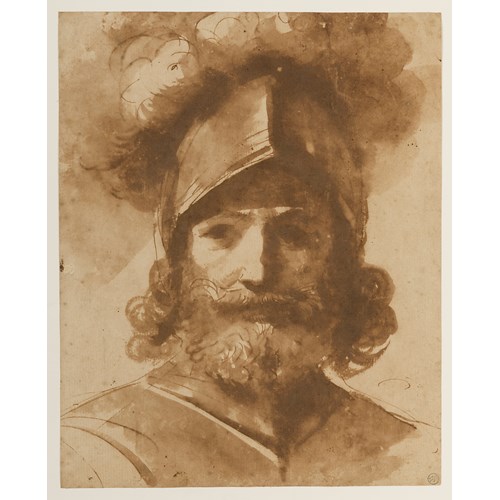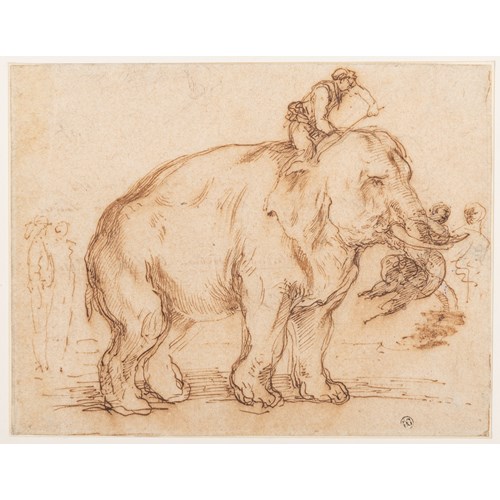19th Century FRENCH SCHOOL
Study for the Refortification of Paris: Designs for a Cogwheel for a Revolving Floor
Medium Pen and black ink and watercolour, within a fictive drawn mount
Dimension 26.6 x 49.7 cm (10¹/₂ x 19⁵/₈ inches)
This large drawing appears to show a novel design for a revolving, circular wooden floor that could be turned with a hand-operated cogwheel. Such movable floors would have been used within fortified towers, to allow cannons to be rotated in any direction to fire through embrasures in the walls of the structure.
By the same hand as the present sheet, and of similar technique and dimensions, are two closely-related drawings that were likewise at one time in the collection of the 1st Duke of Wellington; one depicting a plan and section of a rotating wooden floor equipped with cannons, and another showing a plan, elevation and section of a fortified round tower with a revolving floor.
445 x 573 mm. (17 1/2 x 22 1/2 in.) [sheet]
Medium: Pen and black ink and watercolour, within a fictive drawn mount
Signature: Numbered PL-43.em in red ink at the upper left.
Variously lettered and numbered in red ink, and with a scale in feet (piedes) in red ink at the centre.
Dimension: 26.6 x 49.7 cm (10¹/₂ x 19⁵/₈ inches)
Provenance: Arthur Wellesley, 1st Duke of Wellington, Apsley House, London and Stratfield Saye House, Hampshire
Thence by descent to Brigadier Arthur Valerian Wellesley, 8th Duke of Wellington, Stratfield Saye House, Hampshire
His sale (‘Architectural Watercolours and Drawings Related to the Life and Residences of the 1st Duke of Wellington’), London, Sotheby’s, 11 December 1980, part of lot 112
Sir John Richardson, New York.
More artworks from the Gallery





_T638203653957560297.jpg?width=500&height=500&mode=pad&scale=both&qlt=90&format=jpg)

, 1963_T638450929739285139.jpg?width=500&height=500&mode=pad&scale=both&qlt=90&format=jpg)

